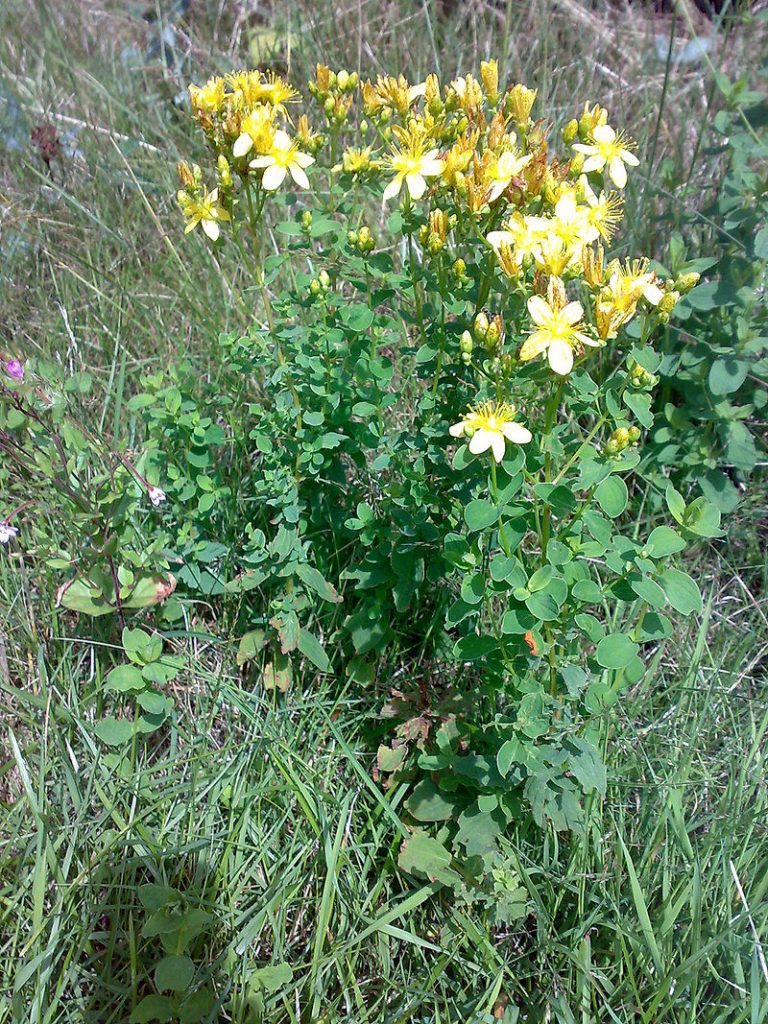
Also called goatweed or Klamath weed, this herbaceous perennial is native to Europe, western Asian and North Africa where it occurs in a wide variety of habitats including pastures, meadows, rangelands, woodlands, open forests, natural clearing, moist ravines, abandoned fields, roadsides, and ditches. It belongs to the Hypericaceae plant family that includes no other well known genera. The root system consists of one or many aerial crowns attached to a system of vertical and lateral roots. The vertical roots reach a depth of two to five feet white the lateral roots are 1.2″ to 3″ deep and produce new crowns. Plants generally grow one to three feet tall but can reach five feet, and have one to many erect often reddish stems that are woody at the base, branched in the upper half ,and have pale green to yellow-green oblong or linear round tipped leaves. The leaves are attached directly to the stem and have scattered translucent dots created by the presence of glands. The flowers are 3/4 inch across and appear in terminal compound cymes of 25-100 all summer. They have five yellow petals with black dots on the edges and give way to round seed pods that have a pointed tip. Common St. John’s wort has been grown since ancient times as a medicinal herb but can cause many health problem including allergic reactions and interference with prescribed medications. It also causes problem for livestock and is considered an invasive weed in many places. The genus name, Hypericum, is from the Greek word hypereikon and derived from hyper, meaning above, plus eikon meaning picture. The plant was believed to keep evil spirits away and the flowers of some species were placed above pictures, windows or doorways for this purpose at the ancient summer solstice festival which later became the feast of St. John, June 24. The specific epithet, perforatum, is the Latin word meaning having or appearing to have small holes and refers to the holes that the Devil pierced in the leaves with a needle in revenge for people using the flowers to repel evil spirits. The holes are actually translucent glands.
Type: Herbaceous perennial
Bloom: Terminal clusters of 25-100 yellow 3/4″ flowers all summer
Size: 1-5′ H x 3/4-2′
Light: Full sun to partial shade
Soil: Average, moist, well-drained, acid; prefer snady or gravely soils.
Hardiness: Zones 5-9
Care: Restrict growth to prevent unwanted spreading
Pests and Diseases: None of significance
Propagation: Seed, cuttings, division
Companion Plants: Other medicinal herbs in an herb garden or other plants associated with the Jesus and Mary in a Marian garden
Photo Credit Bjoertvedt-Wikimedia-Commons